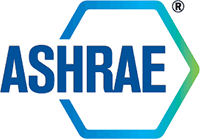ASHRAE’s Guidance for Building Operations During the COVID-19 Pandemic
The HVAC systems in most non-medical buildings play only a small role in infectious disease transmission, including COVID-19. Knowledge is emerging about COVID-19, the virus that causes it (SARS-CoV-2), and how the disease spreads. Reasonable, but not certain, inferences about spread can be drawn from the SARS outbreak in 2003 (a virus genetically similar to SARS-CoV-2) and, to a lesser extent, from transmission of other viruses. Preliminary research has been recently released, due to the urgent need for information, but it is likely to take years to reach scientific consensus.
Even in the face of incomplete knowledge, it is critically important for all of us, especially those of us in positions of authority and influence, to exercise our collective responsibility to communicate and reinforce how personal choices about social distancing and hygiene affect the spread of this disease and its impact not just on ourselves, but on our societal systems and economy. The consequences of overwhelming the capacity of our health-care systems are enormous and potentially tragic. The sooner we “flatten the curve,” the sooner we can return to safer and normal economic and personal lives.
According to the WHO (World Health Organization), “The COVID-19 virus spreads primarily through droplets of saliva or discharge from the nose when an infected person coughs or sneezes….” Talking and breathing can also release droplets and particles. Droplets generally fall to the ground or other surfaces in about 1 m (3 ft), while particles (aka aerosols), behave more like a gas and can travel through the air for longer distances, where they can transmit to people and also settle on surfaces. The virus can be picked up by hands that touch contaminated surfaces (called fomite transmission) or be re-entrained into the air when disturbed on surfaces…
>> Read more here: https://www.ashrae.org/news/ashraejournal/guidance-for-building-operations-during-the-covid-19-pandemic

